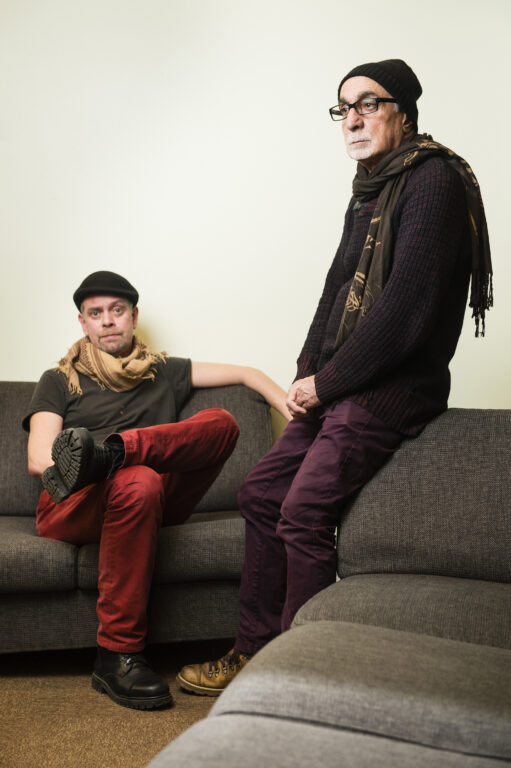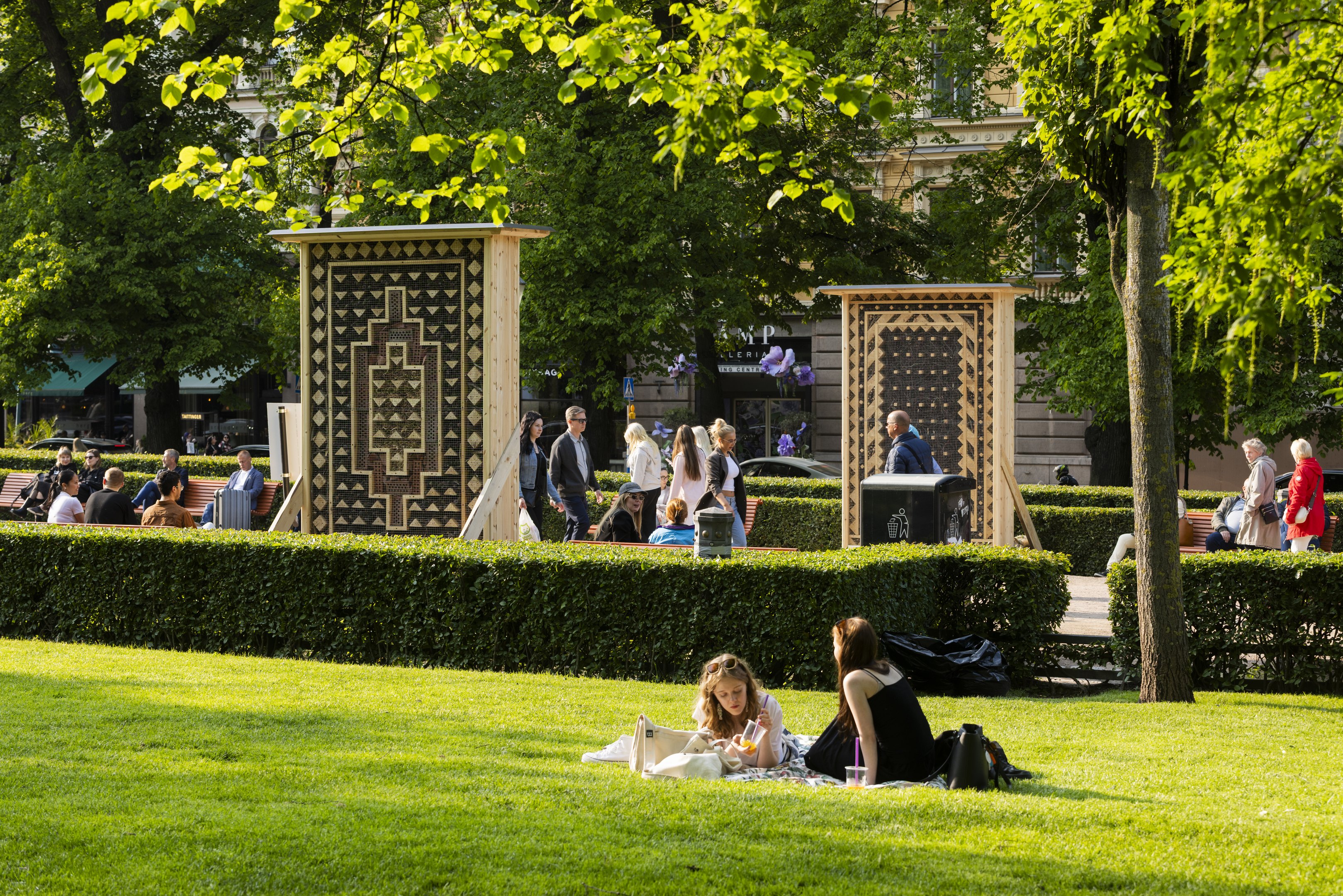
Finnish Kalle Hamm (b. 1969) and Iranian-born Dzamil Kamanger (b. 1948) are Helsinki-based artists who have been collaborating since 1999.
Their cross-cultural art explores the status of the marginalized in mainstream culture, the theme of equality, and experiences of inclusion and exclusion.
Photo: Veikko Somerpuro

Kalle Hamm & Dzamil Kamanger: Bug Rugs, 2025, detail. Helsinki Biennial 8.6.–21.9.2025, Esplanade Park. Photo: HAM / Helsinki Biennial / Henni Hyvärinen
Bug Rugs, 2025
Artwork location: Esplanade Park
Bug Rugs is a group of four insect hotel sculptures in Helsinki’s Esplanade Park. Their decorative patterns are inspired by a traditional Finnish rya rug wool tapestry and a Kurdish kilim rug, which are uncannily similar in their geometrical design. Both are made using the Smyrna stitch, or ‘rya knot’. While serving as functional items that provide warmth in the home, both rug types impart symbolic visual narratives and hold special heritage value in their respective cultures. The designs typically feature a dominant central motif surrounded by smaller repeated elements. The symmetrical patterns symbolize the cycle of life and the balance of the universe, serving as a protective talisman against external threats to the home.
The work is a meeting of cultures and a site of interspecies encounters. With their sculptures, Hamm and Kamanger invite insects to make a home for themselves amid throngs of townspeople and tourists in one of Helsinki’s busiest downtown parks.
The sculpture frames are made of sustainably produced wood stuffed with fragments of terracotta and locally collected organic materials such as reeds, birch twigs and pinecones. Many insects suffer from habitat loss owing to the rapid decline of tree hollows, decaying vegetation and other natural insect habitats. Insect hotels foster ecosystem biodiversity by offering a shelter and nesting place to displaced species, yet only time will tell whether these hoped-for guests so vital to human wellbeing will find and accept their new homes, what kind of residents they will be, and how long our urban coexistence will last.